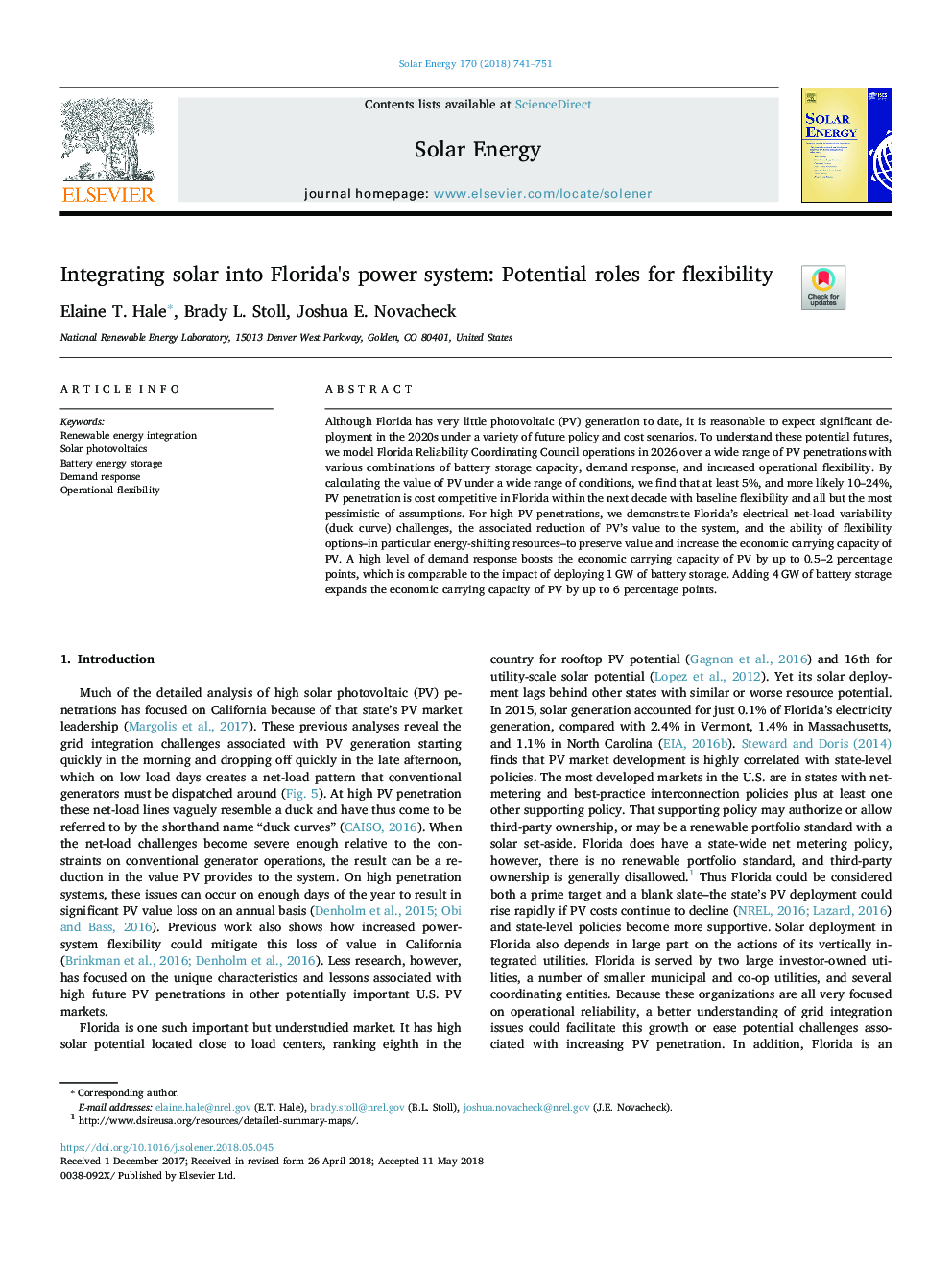| Article ID | Journal | Published Year | Pages | File Type |
|---|---|---|---|---|
| 7935115 | Solar Energy | 2018 | 11 Pages |
Abstract
Although Florida has very little photovoltaic (PV) generation to date, it is reasonable to expect significant deployment in the 2020s under a variety of future policy and cost scenarios. To understand these potential futures, we model Florida Reliability Coordinating Council operations in 2026 over a wide range of PV penetrations with various combinations of battery storage capacity, demand response, and increased operational flexibility. By calculating the value of PV under a wide range of conditions, we find that at least 5%, and more likely 10-24%, PV penetration is cost competitive in Florida within the next decade with baseline flexibility and all but the most pessimistic of assumptions. For high PV penetrations, we demonstrate Florida's electrical net-load variability (duck curve) challenges, the associated reduction of PV's value to the system, and the ability of flexibility options-in particular energy-shifting resources-to preserve value and increase the economic carrying capacity of PV. A high level of demand response boosts the economic carrying capacity of PV by up to 0.5-2 percentage points, which is comparable to the impact of deploying 1â¯GW of battery storage. Adding 4â¯GW of battery storage expands the economic carrying capacity of PV by up to 6 percentage points.
Keywords
Related Topics
Physical Sciences and Engineering
Energy
Renewable Energy, Sustainability and the Environment
Authors
Elaine T. Hale, Brady L. Stoll, Joshua E. Novacheck,
